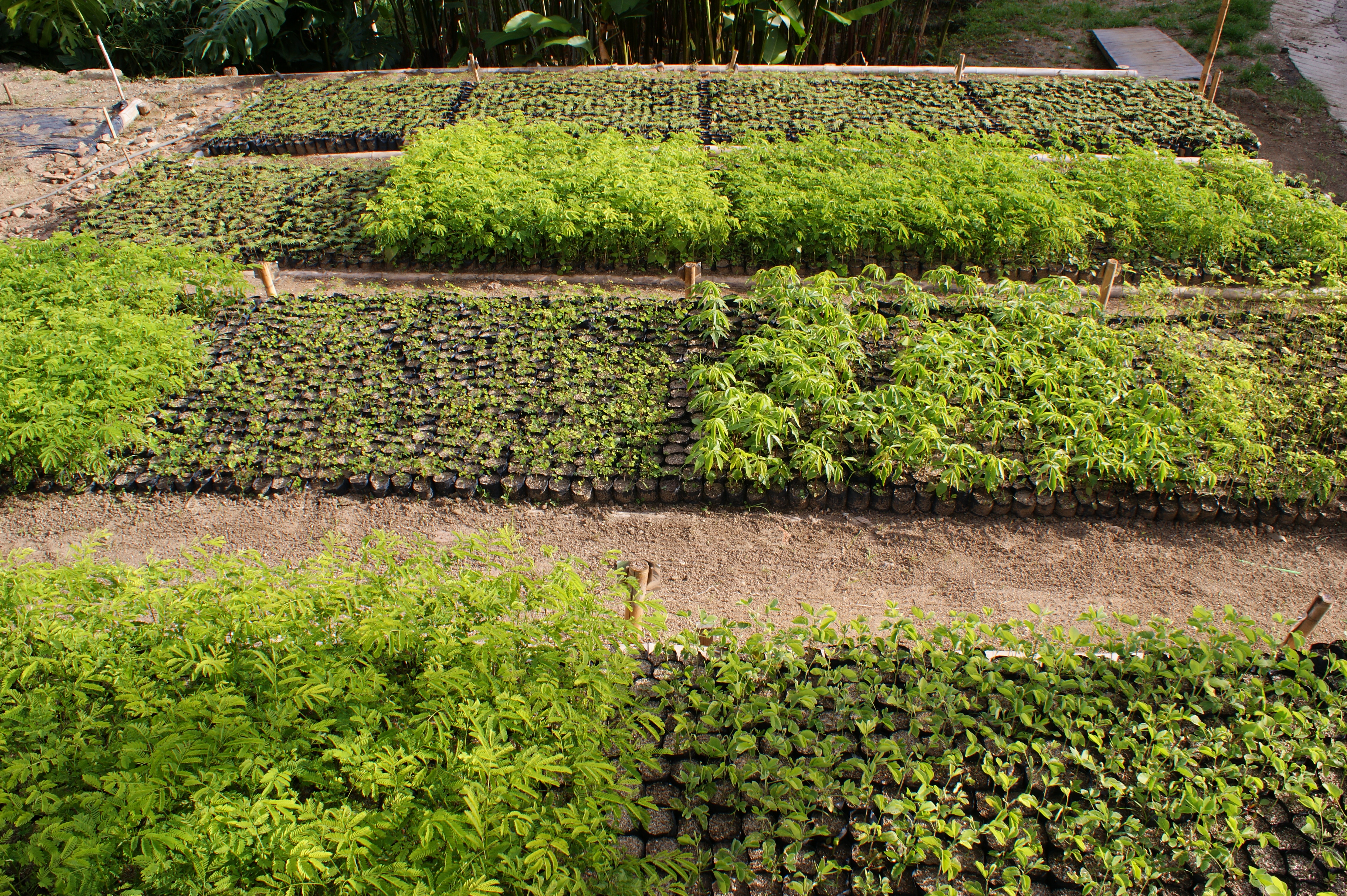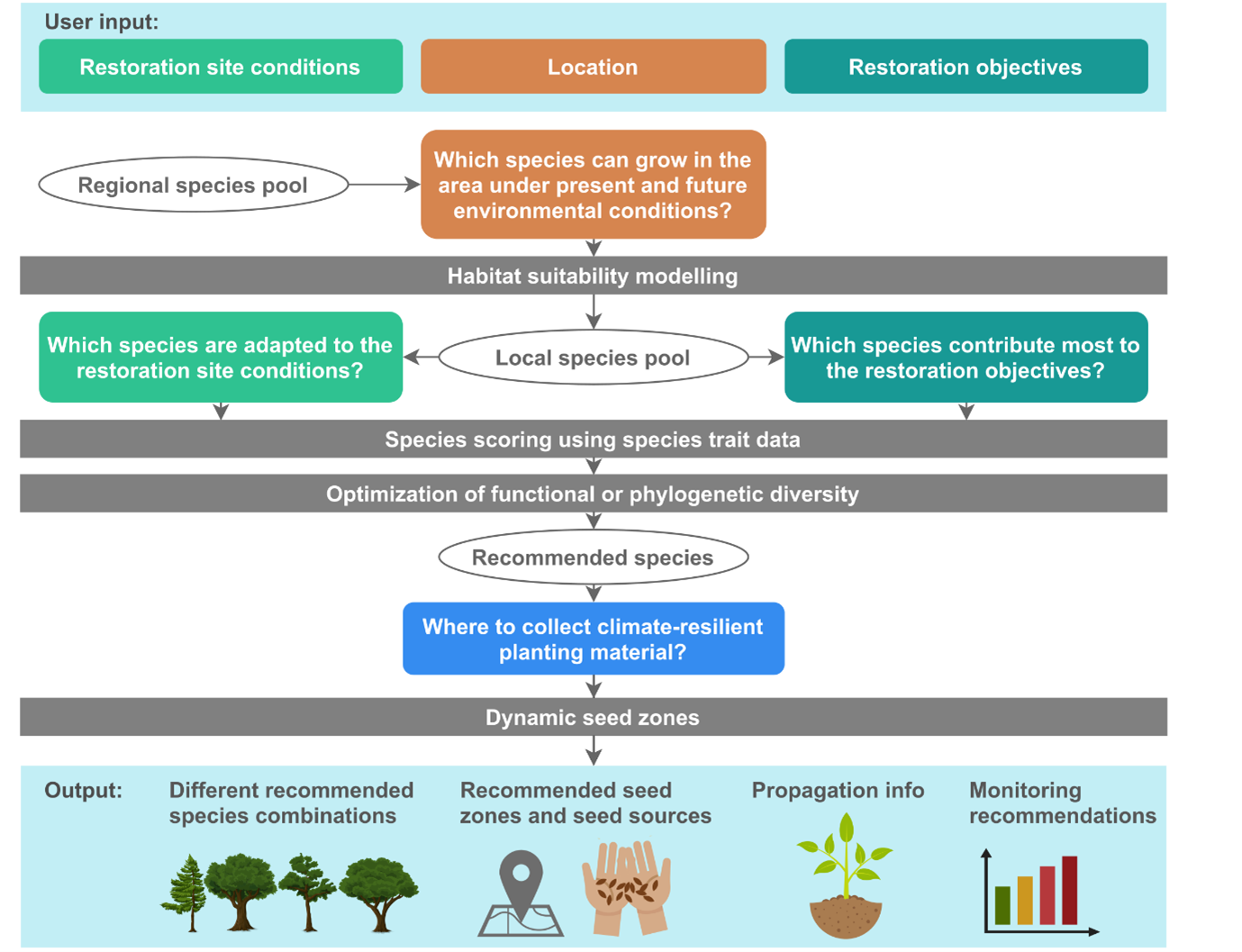In their latest research, Tobias Fremout and colleagues present a scalable and freely available online tool, Diversity for Restoration (D4R), to identify suitable tree species and seed sources for climate-resilient tropical forest landscape restoration.
Governments, NGOs and companies around the world have made ambitious pledges to restore the Earth’s degraded ecosystems. These grand commitments, such as the Bonn Challenge and the One Trillion Tree Initiative, often rely heavily on tree planting. Tree planting is not an alternative to reducing the emission of fossil fuels or halting deforestation, yet it can contribute to tackling the ongoing biodiversity crisis and contribute to climate adaptation.
Nevertheless, planting trees is not an easy solution to these challenges. For example, making sure that tree species and seed sources match the site conditions and restoration objectives requires careful planning. Today, many tree planting initiatives limit themselves to a low number of well-known tree species, which is partly due to the fact that project managers may lack the necessary knowledge; especially now that large-scale tree planting initiatives are drawing in many new players. Ambitious targets – ones which centralise the number of planted trees, for instance — worsen this situation, as projects must resort to the use of planting material that is readily available.
Instead, we should be making better use of native tree species diversity in restoration, due to their potential to enhance biodiversity and increase climate change mitigation benefits, which will result in success over a longer time frame.

A tool to support tree planting decisions
To overcome some of the challenges mentioned above, we have developed the Diversity for Restoration tool (D4R). D4R is a tool to guide the selection of tree species and seed sources, as presented in our article in the Journal of Applied Ecology. Depending on user-defined inputs, including restoration site location, local site conditions (e.g., steep slopes, compacted soils), and restoration objectives (e.g., bird conservation, timber production), the tool recommends tree species combinations and seed sourcing areas. Species-specific propagation information and basic monitoring suggestions are also provided.
Our tool is intended to support decision making for anyone planning tree planting and seed sourcing in tropical forest landscapes, regardless of the purpose or restoration approach. The tool is currently available for Burkina Faso and Cameroon and the tropical dry forests of Colombia, Ecuador, and Peru.

Bridging the gap between research and practice
The D4R tool aims to support science-based restoration practice by integrating several ecological research methods in a user-friendly tool. First, habitat suitability models are used to determine which species can grow at the planting site under present and future environmental conditions. Next, these species are scored using a wide range of species characteristics, including biological traits (e.g., growth rate, wood density), socio-economic traits (e.g. timber and non-timber forest products), and local ecological knowledge. The tool then uses these scores to recommend combinations of species whilst also optimizing the functional diversity of these species.
To assist restoration planners in the collection of site-adapted seeds, the tool provides seed zone maps that take into account climate change. To ensure adaptability under both present and future climatic conditions, the tool recommends supplementing seeds from the local seed zone with seeds from the seed zone where current environmental conditions are most similar to those expected in the future, at the planting site. In the tropical dry forests of Peru and Ecuador, the tool also supplies details of established seed sources.

A building block for successful restoration
The species recommended by the tool are based on the best information available, although this is only the starting point for deciding which species to plant. The suggested species list will need to be approved by stakeholders — especially local communities — whilst also evaluated in light of what is logistically possible and adjusted where necessary.
Choosing the right tree species and seed sources is only one of several building blocks that are needed for successful restoration. For example, many countries still have a long way to go to make available the enormous quantities of site-adapted and genetically diverse seeds that will be needed to meet ambitious restoration targets.
Looking forward
D4R is a dynamic tool, both in terms of the inclusion of additional restoration objectives and the expansion to other regions. Currently, we are rolling out new restoration objectives related to nutrition and adapting the tool for the selection of shade trees in cacao and coffee agroforestry systems. Expansion of the tool is also underway in parts of Ethiopia, India, Malaysia, and Thailand.
We welcome all feedback on the tool — and we are open to collaborations to test the tool on the ground, or for expansion into other regions.
Read the full paper Diversity for Restoration (D4R): Guiding the selection of tree species and seed sources for climate-resilient restoration of tropical forest landscapes in Journal of Applied Ecology.
